Known as “the white city” because of its clear light and beach-worthy climate, Lisbon is spread over a string of seven hills north of the Tagus River. With its switchback streets and alleyways, pastel-colored houses with laundry hung out to dry, black-and-white mosaic cobblestone sidewalks bordering wide boulevards, red and yellow trams clanking through the streets, blue-and-white painted, glazed ceramic tiles adorning churches and fountains, it is as if the city had been handcrafted for a Cinemascope movie.
Lisbon, the capital of Portugal, was colonized by many civilizations such as the Greeks and the Moors, and finally in 1147, by the Portuguese. The city is linked with heroic deeds of the Portuguese maritime exploration in the 15th and 16th centuries. It was the Age of Discoveries and the Golden Era of Portugal, transforming Lisbon into the opulent center of a vast empire. Part of the wealth from these expeditions was used to build monuments and buildings in a unique Portuguese style: the extravagant Manueline architecture, best typified in the Jerónimos Monastery (a UNESCO World Heritage Site).
One of the magnificent, gigantic pieces of sculpture, The Padrão dos Descobrimentos, a monument to the Age of Discovery, overlooks the northern bank of the Tagus River, where eons ago, ships departed to explore and trade with India and the Orient. The sculpture was conceived in 1939 by Portuguese architect José Ângelo Cottinelli Telmo and Leopoldo de Almeida, as a temporary beacon during the Portuguese World Fair, opening in June 1940. The immense, 171-foot slab of rock is comprised of thirty-three statues, representing a romanticized idealization of Portuguese explorers, monarchs, cartographers, artists, scientists and missionaries, including, Vasco da Gama (discoverer of the sea route to India) and Ferdinand Magellan (the first man to circumnavigate the globe).
Serving as the backdrop to the monument is the Ponte 25 de Abril Bridge, a suspension bridge connecting the city of Lisbon to the municipality of Almada. Because it is a suspension bridge and has similar coloring, it is often compared to the Golden Gate Bridge in San Francisco. It was built by the American Bridge Company, which constructed the San Francisco–Oakland Bay Bridge, but not the Golden Gate.
My mother and father, who adored Portugal, told me that some day I should visit the famous Calouste Gulbenkian Museum. So, like a good daughter, I obeyed, not realizing that the Gulbenkian Museum would be one of my favorite art experiences of the trip, alongside of course, the Guggenheim in Bilbao, Spain (see Blog #5). Mr. Gulbenkian was an Armenian-British businessman and philanthropist, who played a major role in making the petroleum reserves of the Middle East available to Western development. By the end of his life, he had become one of the world’s wealthiest individuals (he was called ‘Mr. 5%’ because he owned 5% of all oil in the Middle East). Gulbenkian’s art acquisitions are considered one of the greatest private collections in the world. His motto was “Only the Best”, and hence the museum has masterpieces by western European artists such as, Rubens, Rembrandt, Rodin, Renoir, Carpaccio, Van Dyck, Degas, Manet, Monet and many others.
During Gulbenkian’s lifetime, according to where his travels took him, and sometimes after long and laborious negotiations with the best experts and specialized dealers, he built up a highly eclectic collection unlike any other. Today, the collection comprises more than 6,000 pieces, all strictly authenticated and dating from remote antiquity to the early twentieth century. From rare antique coins to Egyptian mummy masks, his attachment to these works of art was so great that he treated them as if they were his children.
Our driver dropped us off for a special treat at the very famous bakery, Pastéis de Belém, known for their truly addictive, Pastel de nata– which is a Portuguese warm egg tart pastry. The guide shared the information that for decades, other chefs and non-pros have tried to replicate their egg tart pastry since 1837 (the year of their opening), but nobody has yet cracked the family recipe. Along with the tourists, there were families of Portuguese children and their parents, enthusiastically imbibing.
Final word on the city of Lisbon is that it is a candidate for the 2020 Summer Olympics — but because of the city’s intrinsic, ubiquitous, one-of-a-kind charming alleyways, tourists could be lost forever in their winding, picturesque bowels.
All photographs by Ryan Oksenberg









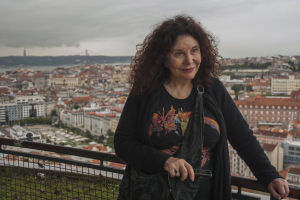
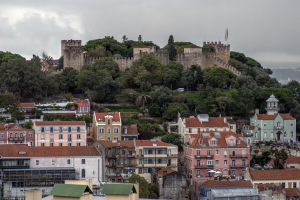
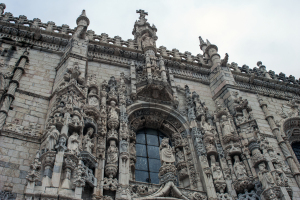
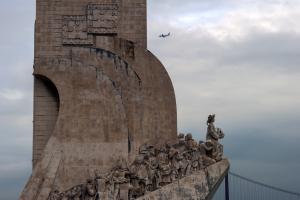

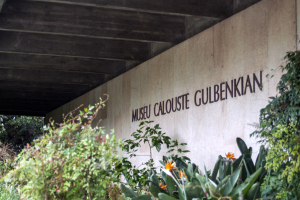
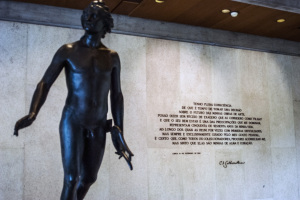

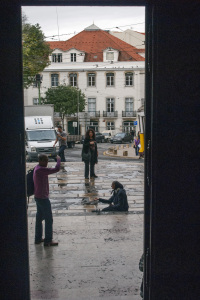

I’m envious but so appreciative of your sharing this trip with all of us.
Love and a hug!
Happy Holidays!!
Thanks dear Alan, so glad the blog is giving you inspiration to put on your travel shoes!
Love and hugs back to you and Beautiful Holidays!